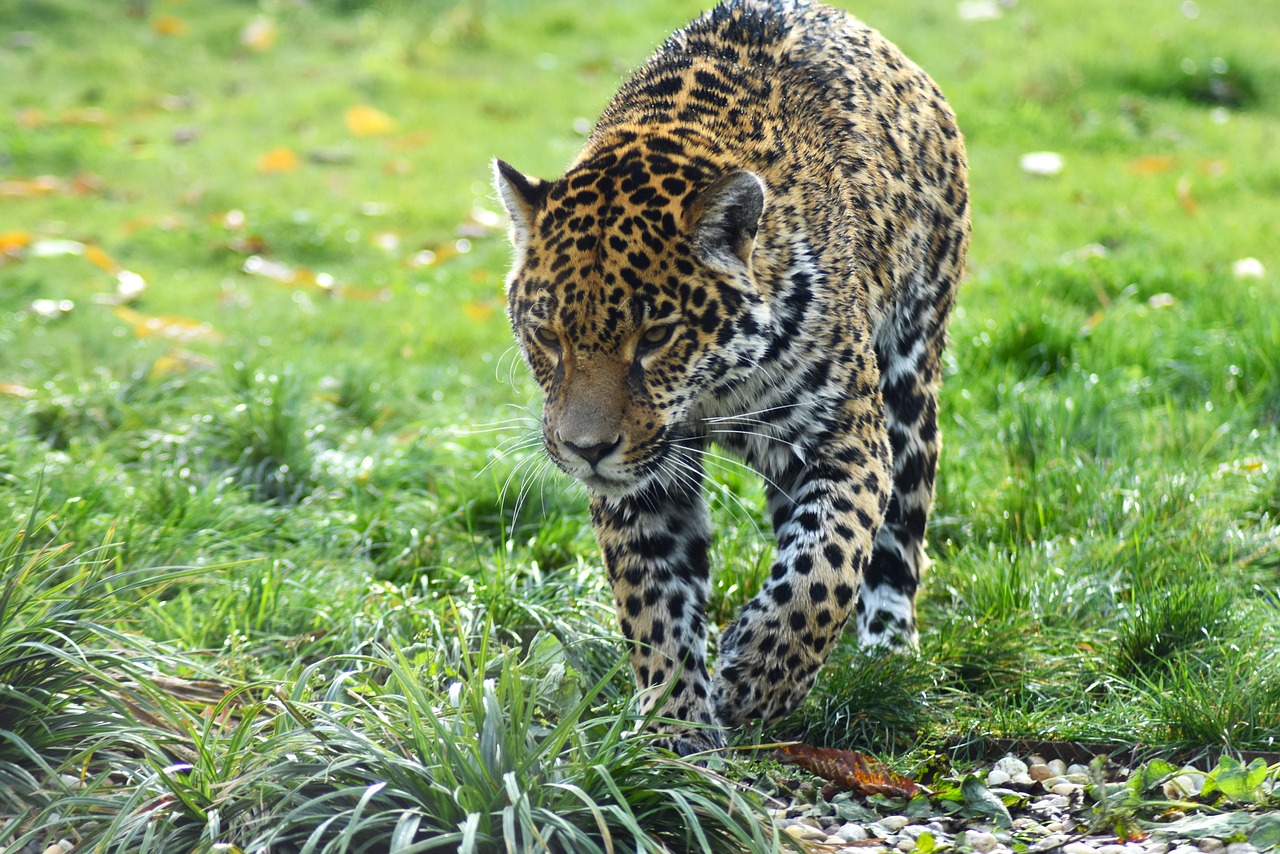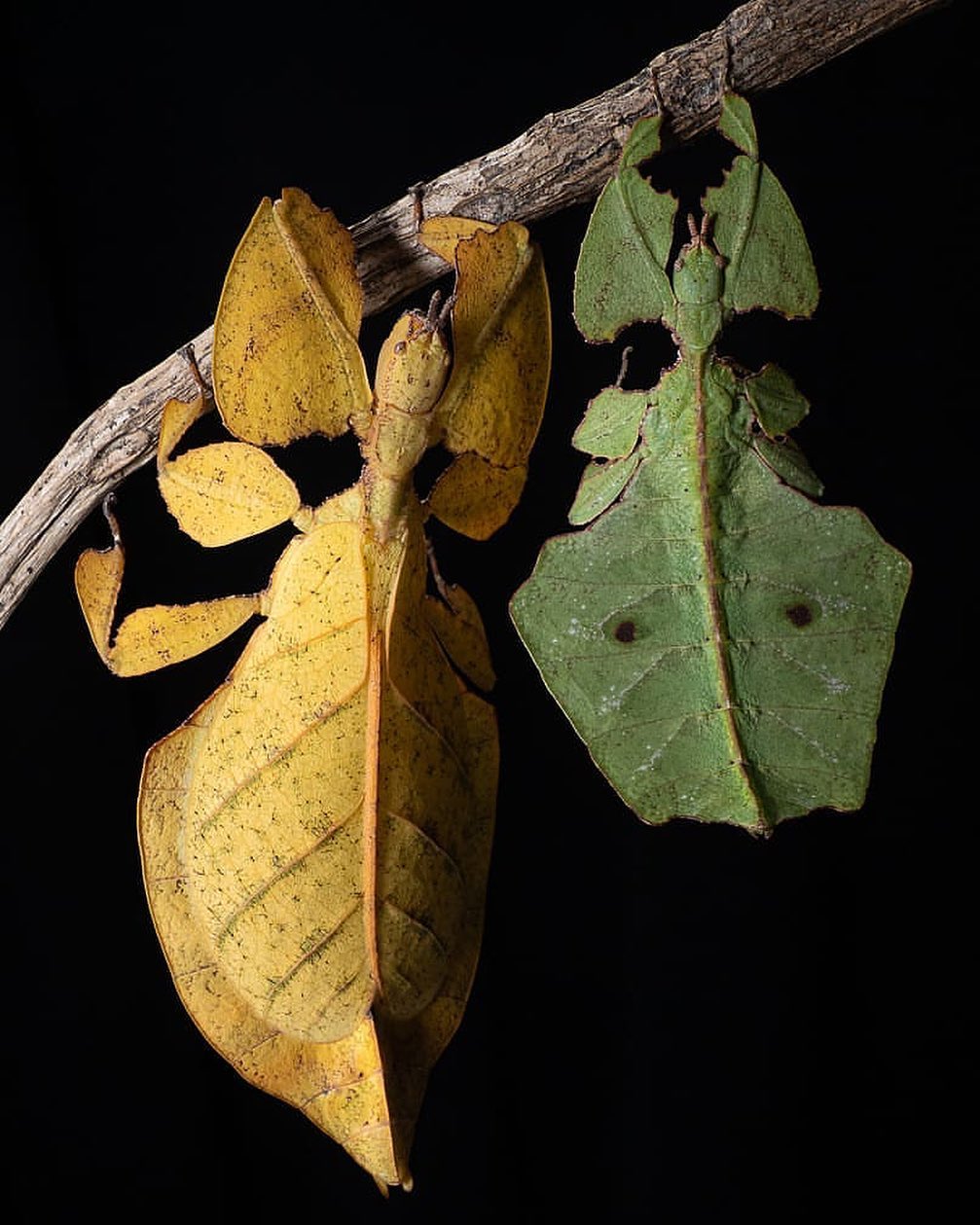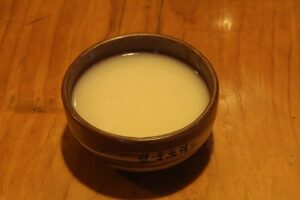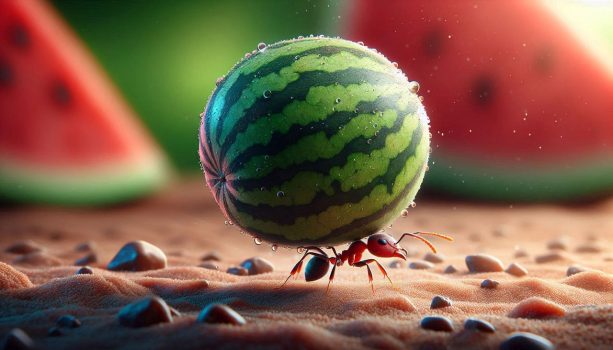 Pin
Pin Image by Alexa from Pixabay
Ants might not be big, but they sure are mighty. These little creatures pack a punch when it comes to strength, intelligence, and teamwork. With over 12,000 species discovered (and probably a lot more hiding in your garden), ants are nature’s unsung heroes. So, grab a magnifying glass (not literally—give them some privacy) as we dive into the fascinating world of ants and their remarkable abilities.
Table of Contents
The World Through an Ant’s Eyes
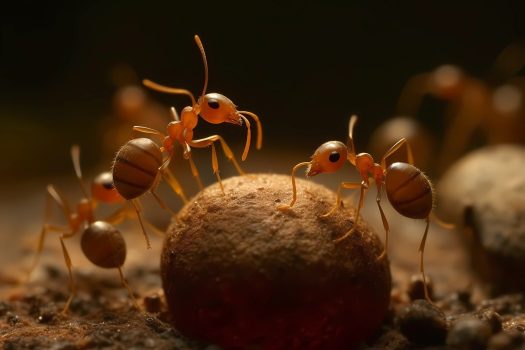 Pin
Pin Image by Aleksander Polanowski from Pixabay
Ants may be small, but they play a big role in the natural world. Whether it’s aerating soil, cleaning up dead organic matter, or just being tiny engineers, ants are essential to ecosystems everywhere. They’ve colonized almost every part of the Earth, except Antarctica (probably too cold for their taste).
But what makes these little critters so incredible? Well, their strengths are as diverse as their species. From farmers to warriors to architects, ants have skills that put even the most advanced humans to shame. Let’s meet some of the coolest ant species and uncover their superpowers.
Leafcutter Ants - The Mini Farmers of the Jungle
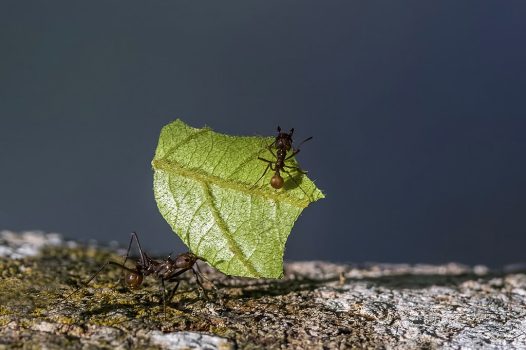 Pin
Pin Photo from Wikimedia Commons
Leafcutter ants are nature’s agricultural geniuses, proving that you don’t need a tractor to run a farm. These ants slice leaves with surgeon-like precision and carry the fragments back to their colonies, often lifting 50 times their body weight. That’s like a human hauling a small car on their shoulders without breaking a sweat.
But what makes leafcutter ants truly remarkable isn’t their strength; it’s their ingenuity. They don’t eat the leaves they collect. Instead, they use them to cultivate a specialized fungus, which serves as their primary food source. Essentially, they’ve mastered the concept of farming long before humans even figured out how to plant wheat.
Their colonies operate like highly efficient agricultural hubs, with millions of ants working together in perfect harmony. A single colony can house up to 8 million ants, each with a specific role to ensure the success of their fungal farms.
Fun Fact: Leafcutter ants have bacteria on their bodies that act as natural antibiotics, protecting their precious fungus from harmful invaders.
If these ants ever wrote a self-help book, it would probably be titled “Work Smarter, Not Harder: How to Feed Millions with Teamwork and Fungi.” With their extraordinary farming techniques and unwavering dedication, they’ve turned the jungle floor into a bustling agricultural paradise.
Bullet Ants - The Painful Warriors
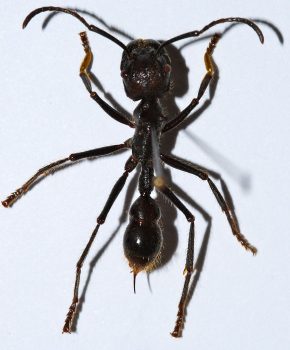 Pin
Pin Photo from Wikimedia Commons
The bullet ant is infamous for its sting, widely regarded as the most painful in the insect world. It’s not just a sting—it’s an experience, often described as feeling like a gunshot wound. This explains their dramatic name, and they’ve more than earned it.
Despite their fearsome reputation, bullet ants aren’t aggressive without reason. They’re actually peaceful creatures until someone threatens their colony. That’s when their true strength shines through. With jaws like steel traps and venom that could humble even the toughest predator, they’re the ultimate defenders.
The indigenous tribes of Central and South America have a unique relationship with these ants. In some tribal rituals, young men endure bullet ant stings as a test of strength and endurance. Talk about a painful rite of passage!
Thought: Who needs a motion-sensor alarm when a colony of bullet ants can guard your property? Just sprinkle some sugar as payment and sleep soundly knowing you’re in safe (and tiny) hands.
Even with their intimidating sting, bullet ants are a testament to the importance of defense. They remind us that sometimes, strength isn’t about aggression—it’s about knowing when to protect what matters.
Weaver Ants - Nature’s Architects
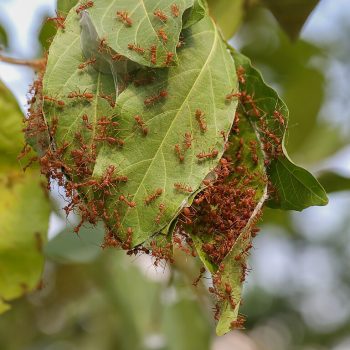 Pin
Pin Photo from Wikimedia Commons
Weaver ants redefine what it means to be creative builders. These tiny architects construct intricate nests by weaving leaves together, using silk produced by their larvae as a natural adhesive. While one group of ants pulls leaves into position, others “sew” them together, creating leafy homes that are both functional and sturdy.
What’s even more impressive is the scale of their teamwork. Colonies of weaver ants can stretch across several trees, with thousands of ants coordinating their construction projects seamlessly. If ants had construction companies, they’d outbid humans in a heartbeat.
Fun Fact: Weaver ants are so resourceful that some farmers in Asia use them as natural pest controllers in fruit orchards. They patrol the trees, eliminating harmful insects, all while maintaining their architectural masterpieces.
While humans spend months arguing over blueprints and zoning permits, weaver ants finish their homes without breaking a sweat. They’d make excellent role models for efficiency and collaboration.
If weaver ants worked on human construction sites, skyscrapers would be built in record time—just with a lot more leaves involved!
Army Ants - The Ruthless Hunters
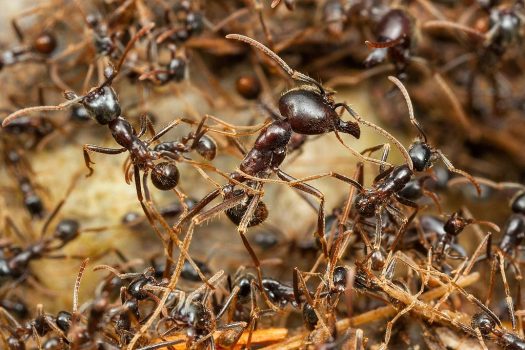 Pin
Pin Photo from Wikimedia Commons
Army ants are the nomads of the ant world, and they take the phrase “strength in numbers” to a whole new level. These relentless hunters don’t bother with permanent nests. Instead, they’re always on the move, forming temporary bivouacs (ant forts) as they travel. Their strategy? Overwhelm anything in their path with sheer numbers and razor-sharp mandibles.
An army ant colony can consist of over a million members, all working in synchronized chaos to hunt and forage. They’re the definition of teamwork. When faced with obstacles like rivers or gaps, they link their bodies together to form living bridges and rafts, showcasing their ability to adapt and unite for survival.
Strength in Numbers: Imagine having a million siblings, and all of you moving house together. That’s the life of an army ant. Constantly packing up and relocating doesn’t faze them one bit.
Note: If you think moving is stressful, try being an army ant. They’re basically in a permanent state of “on the go.” Forget U-Haul—they are the U-Haul!
While their hunting tactics might seem ruthless, army ants are a testament to the power of unity. Their teamwork and adaptability make them one of nature’s most efficient predators. Let’s just be glad they’re not human-sized.
Fire Ants - The Fiery Fighters
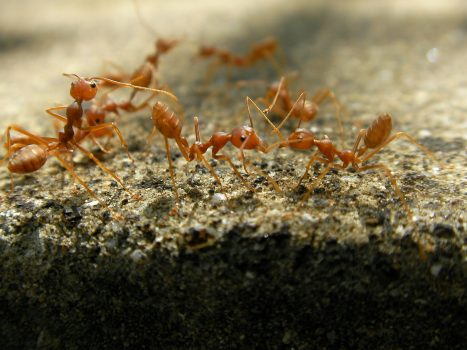 Pin
Pin Photo from Wikimedia Commons
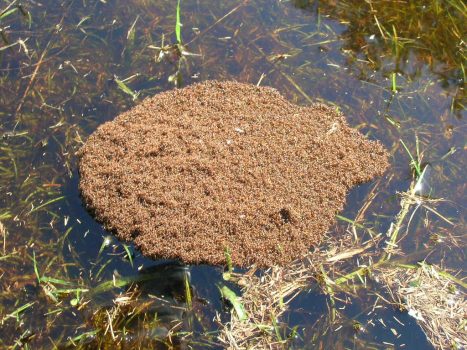 Pin
Pin Photo from Wikimedia Commons
Fire ants are as fierce as their name suggests. These tiny warriors are known for their aggressive behavior, painful stings, and remarkable survival skills. Their venom is not just a deterrent; it’s a fiery warning that says, “Mess with us, and you’ll regret it.”
But what truly sets fire ants apart is their resilience. When floods threaten their colonies, they band together to form floating rafts, linking their bodies to stay buoyant. This unique survival strategy has saved countless fire ant colonies during natural disasters.
Fun Fact: Fire ants can survive on water for weeks by forming these rafts. If they had miniature life jackets, they’d probably patent them.
Their fiery temperament and survival instincts have earned them a reputation as daredevils of the ant world. They’re ready to sting, fight, or float their way out of trouble, no matter the odds.
Lighthearted Take: Fire ants don’t just survive—they thrive. If there were an insect version of Survivor, fire ants would win every season, hands down (or mandibles up).
Pavement Ants - The Urban Warriors
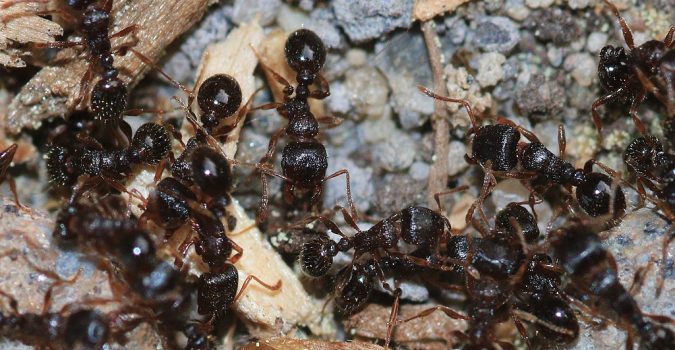 Pin
Pin Photo from Wikimedia Commons
Pavement ants are the ultimate city dwellers. These ants thrive in urban environments, making their homes in cracks, sidewalks, and driveways. While they might seem unassuming, they’re anything but. Pavement ants are notorious for their territorial battles, where thousands of ants face off in gladiator-style clashes over prime real estate.
Their adaptability is their greatest strength. Whether it’s bustling city streets or quiet suburban gardens, pavement ants know how to make themselves at home. They’ve even learned to live alongside humans, often snacking on crumbs and leftovers.
Quirky Thought: If ants had their own reality TV show, pavement ants would star in “Ant Wars: Turf Battles of the Concrete Jungle.” It’d be a hit.
Despite their small size, pavement ants are proof that even the tiniest creatures can make a big impact. Their ability to adapt and thrive in human-dominated environments makes them one of the most resilient ant species out there. Who knew sidewalk cracks could hold such fierce warriors?
Conclusion
Ants may be small, but their strengths are mighty. From teamwork and resilience to innovation and adaptability, these tiny titans of the insect world have a lot to teach us.
Next time you spot an ant scurrying along, take a moment to appreciate the incredible world it represents. After all, they might be the true MVPs of nature’s playbook.

